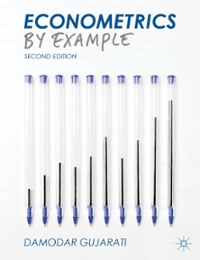Question
Suppose a consumer views two goods, X and Y, as perfect complements. Her utility function is given by U = MIN [2X, Y]. Sketch the
Suppose a consumer views two goods, X and Y, as perfect complements. Her
utility function is given by U = MIN [2X, Y]. Sketch the graph of the consumers indifference
curve that goes through the bundle X = 5 and Y = 4. Put the amount of Y on the vertical axis,
and the amount of X on the horizontal axis. Which of the three assumptions that we made about consumer preferences is violated in this case?
How do you know which assumption is violated for this problem?
Could you explain to me what to look at in choosing which of the following: More is better, Completeness, or Transitivity assumptions is being violated.
thank you.
Step by Step Solution
There are 3 Steps involved in it
Step: 1

Get Instant Access to Expert-Tailored Solutions
See step-by-step solutions with expert insights and AI powered tools for academic success
Step: 2

Step: 3

Ace Your Homework with AI
Get the answers you need in no time with our AI-driven, step-by-step assistance
Get Started


